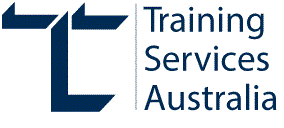Statutory Supervisors Course

Who should do this training?
The course has a been designed for supervisors and team leaders who work in the Western Australian mining industry.
The units covered meet the WorkSafe requirements for statutory supervisors under Schedule 26 of the WHS (Mines) Regulations (WA) 2022. These units can also be used as elective units in the BSB40520 Cert IV in Leadership and Management
We strongly recommend participants undertake our WHS Statutory Responsibilities for Mining Supervisors (SRMS) course before attending this course. TSA also offers a LGIRS (Formerly DEMIRS) Exam Preparation Course which we recommend before undertaking the law exam.
How long does the course go for?
The workshop duration is 3 days.
What is the cost?
$900 per person for our public workshops.
Special rates can be negotiated for workshops conducted by Training Services Australia (TSA) on behalf of our clients, exclusively for their personnel, either at their premises or at TSA.
Where are the training locations?
Our public workshops are conducted at TSA’s Mt Lawley training centre.
When is the course available?
Public course dates are listed below. Please click on the date to enrol. In-house/private training can be arranged at a time and date suitable to your business.
Mt Lawley
Jandakot (ERGT)
Are there any course pre-requisites?
There are no formal pre-requisites for this course, however the course has been designed for those working in supervisory roles in the Western Australian mining industry.
What are the LLN requirements for this course?
Participants will require a reasonable level of literacy and numeracy, as well as the ability to operate a computer (including using the internet and Microsoft Word to write, edit and format documents). Examples of activities they will need to perform include:
• Access and read WHS information from a variety of sources, including WHS legislation and codes of practice
• Use the internet to locate WHS information
• Access and interpret WHS policies and procedures within their organisation
• Prepare WHS training plans
• Carry out WHS inspections and document the results
• Document workplace hazards and risk assessments, including calculating and ranking risks
• Review and interpret WHS data
Those wishing for further advice about whether they have the necessary LLN skills to complete this course should contact a TSA Training Advisor – Ph: (08) 9422 6444
Which unit(s) are covered?
BSBWHS411 – Implement and monitor WHS policies, procedures and programs
BSBWHS414 – Contribute to WHS risk management
What topics and activities are included?
Introduction to WHS
- What is WHS?
- Why is WHS important?
- Trends in WHS
- WHS terminology
Legislative and Organisational Framework for WHS
- Background to the legislative framework for WHS
- Legislative framework in Australia and WA
- WHS Act, Regulations, Codes of Practice and Guidance Materials
- Key government agencies with a role in WHS
- WHS management systems: policies, procedures and programs
- Working with your organisation’s WHS management system
Duties and Responsibilities for WHS
- Who is responsible for WHS?
- Duty of care
- Principles that apply to WHS duties
- Other duties, rights and obligations
- Enforcement of WHS legislation
WHS Communication and Consultation
- Providing information to the work team
- WHS consultation
- Safety and health representatives
- Safety and health committees
- Toolbox meetings
- Monitoring consultative processes
- Dealing with issues raised through consultation
WHS Training
- Identifying WHS training needs
- Some specific training needs
- Arranging to meet WHS training needs
- WHS training in the workplace
- Coaching and mentoring
WHS Risk Management
- The risk management process
- Types of workplace hazards
- Hazard identification methods
- Recording and reporting workplace hazards
- Risk assessment
- Risk control
- Practicability of control measures
- Hierarchy of risk control measures
- Monitoring and review of risk control measures
- Risk management tools
Inspections and Investigations
- Preparing for an inspection
- Conducting the inspection
- Inspection follow up
- Incidents and accidents
- Incident investigation
- Immediate causes and underlying causes
- Root cause analysis techniques
WHS Record Keeping
- Types of WHS records
- Recording and reporting WHS incidents
- Writing an incident report
- Using aggregate WHS information and data
Is there any pre-course work?
Prior to attending the workshop, participants are encouraged to familiarise themselves with their organisation’s:
• WHS policy
• WHS risk management policies, procedures and forms
• Incident / injury report form(s)
What about homework and assessment requirements?
Participants may be required to complete some work at home after each day of the course, in preparation for the following day.
The assessment for this course consists of:
• Assessment questions and activities to be completed on-course
• Post-course assessment activities based around WHS topics, including:
– WHS training
– WHS policies and procedures
– Hazard identification and team consultation
– Risk assessment and risk control
– WHS record keeping
• A “third party” report will be required from your supervisor, confirming your practical application of competencies in the workplace
Is there any more information?
Yes! Click here for more detailed course information including Language, Literacy and Numeracy (LL&N) requirements, Recognition of Prior Learning (RPL) and other general advice.
Please also review our learner agreement prior to enrolment, which contains important information about your rights and obligations as well as support services available to you. Additionally, you can email us here or call us on 08 9422 6444.

